 This post is about the “Things I Know” when it comes playing basketball “the correct way”, i.e. the way that I like my teams to play. Each of these short “Things I Know” is followed by an action that players should carry out in the described situation.
This post is about the “Things I Know” when it comes playing basketball “the correct way”, i.e. the way that I like my teams to play. Each of these short “Things I Know” is followed by an action that players should carry out in the described situation.
Are these statements true in every situation? Probably not, but they are true in enough game situations that they should be worth building into your game plan. I should add that as you progress to higher and higher levels of basketball, e.g. college or the pros, the best players know these “things” and make sure they are the “exception to the rule”. In any case, my hope is that these “Things I know” will give you something to think about. (I also look forward to your ideas / feedback in the comments section below!)
1) Players go slower when dribbling with their weak hand.
—-> Force them to their weak hand.
2) Players dribbling with their weak hand will look for opportunities to switch back to their strong hand.
—-> Steal the ball when it is “presented”.
3) Many players (especially in high school) won’t shoot with their weak hand (when they should).
—-> Block the shot.
4) Offensive players who are trapped will often throw poor passes.
—-> Trap with hands up (don’t foul).
—-> Non-trap defenders must be ready and steal the pass.
5) Tired players make mistakes.
—-> We want to tire out the other team, especially their primary ball handler(s), so that we can force them into mistakes later in the game.
6) There is such a thing as a “good foul”.
—-> Non-shooting foul preferred
—-> A good foul prevents the other team from getting an easy shot.
—-> A good foul is also the result of hustle and aggressive defense.
7) Defenders can U based on these three “Things I know”, if they are studying their opponent…
a) patterns / what the offense has done before
b) what appears to be the offense’s best option
c) where the offensive player is looking.
—-> Steal the ball.
8) Help Defenders must put their body in the path of the [driving] offensive player.
—-> Concentrate on the ball… and take it away.
—-> Remember where your man was… anticipate the pass and steal it.
9) On almost every play, a pass goes by a defender at shoulder or waist height but it is not deflected because the defender didn’t have their hands up (or wasn’t paying attention to the ball).
—-> Keep your hands up and in the passing lanes [at “pass height”].
—-> It is OK to stop a pass with your foot. Defense will be called for a “kick” but the other team’s offense will be disrupted and they will have to take the ball out of bounds (OOB).
10) More fast breaks are killed by the player who rebounds the ball and then holds onto it.
—-> Pass the ball immediately. Know where your team mate will be.
11) Passing is faster than dribbling.
—-> Pass the ball to the open man ahead of you.
12) RUN. Don’t slow down on a fastbreak. [this is most often done at, or near, the 3 point line].
—-> Break TO the basket first and then create space for a kickout pass.
—-> Don’t forget the 4th or 5th man down the court. Hit the trailer for a layup.
—-> Move the ball! Don’t let the defense set up.
13) Offensive players must GET OPEN. Standing in place lets the defense to jump the pass when it is thrown to you.
—-> Use contact with your defender to create an opening for the pass.
—-> Put your hand out as a target to show your team mate where to pass the ball.
14) Don’t run diagonally to get open. [This applies most often to guards being pressured in the backcourt.] Defenders can beat you to the ball when you cut diagonally.
—-> Use contact to get open.
15) Call out picks. [No Excuses]
16) When an offensive player picks up their dribble, they are locked to that location on the floor and their passing options are limited.
—-> Scream BALL, BALL, BALL when you see the offensive player pull up their dribble. It will increase their stress level and make it more likely that they will throw a bad pass.
—-> If you are covering the player who pulls up their dribble, get up close and extend your arms. Do not reach. Mirror the ball and try to tip any pass they might try to throw.
No list of “Things I Know” would be complete without mentioning OOB…
17) When defending an Out of Bounds (OOB) situation, there are 5 defenders and only 4 offensive players on the court. (The inbounding player cannot move, unless it is immediately after a basket.) This gives an advantage to the defense (which many teams do not leverage until, maybe, the last play of the game).
—-> Double team someone, ideally the offensive team’s best player. Prevent the inbound pass to all other players.
—-> If the OOB is under the basket, protect the basket at all costs. “Nothing Inside!”
—-> Switch on picks. Call them out.
—-> Another option is to put your biggest defender (with longest arms) on the guy taking the ball out of bounds and try to tip the inbounds pass. The defender should mirror the ball so they can get a hand on the pass.
—-> If the OOB is after the basket, some of this does not apply…
Those are 17 “Things I know” – Basketball edition. They might also be called Coach Wheeler’s Pet Peeves since they are simple ways that a team can improve their advantage versus the competition. None of these things are very difficult but they do require some effort and even practice so that can be done automatically at a fast pace in a game.
What would you add to this list of Things I know? Please leave a comment below and tell us your ideas.


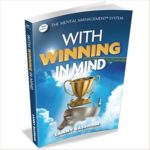 Do you want to win? Do you want to win all of the time? Really? What if you did? What if every attempt was successful and nothing ever went wrong? What if it became way too easy to do? How long would it take for you to tire of it? Winning is special because it is so difficult to do. We tend to value things in direct proportion to the price we pay for them. We do not learn very much standing on the top of the summit. All of the becoming happens on the way up the mountain. I hope you are having a lot of challenges along your journey of a dream. Resistance makes you stronger. If you are not having problems your goals are too low.
Do you want to win? Do you want to win all of the time? Really? What if you did? What if every attempt was successful and nothing ever went wrong? What if it became way too easy to do? How long would it take for you to tire of it? Winning is special because it is so difficult to do. We tend to value things in direct proportion to the price we pay for them. We do not learn very much standing on the top of the summit. All of the becoming happens on the way up the mountain. I hope you are having a lot of challenges along your journey of a dream. Resistance makes you stronger. If you are not having problems your goals are too low.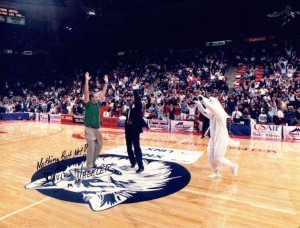
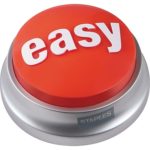

 Don’t use the Talent Mirage as an excuse for not putting in the effort to develop the skills that will allow you to compete at the highest levels. Don’t worry if you can’t see or even imagine all the skills you will need to become successful. Start where you are and keep working hard to improve… step by step. Someday someone will say “You are so Talented.” When that happens, just smile and say “Thank You”… knowing that you put in the effort over time to get where you are. Remember… Talent is a Mirage.
Don’t use the Talent Mirage as an excuse for not putting in the effort to develop the skills that will allow you to compete at the highest levels. Don’t worry if you can’t see or even imagine all the skills you will need to become successful. Start where you are and keep working hard to improve… step by step. Someday someone will say “You are so Talented.” When that happens, just smile and say “Thank You”… knowing that you put in the effort over time to get where you are. Remember… Talent is a Mirage.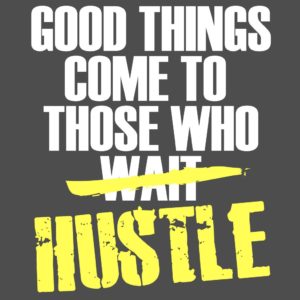 At the
At the 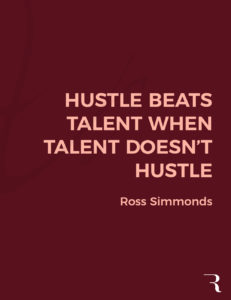 Why does Hustle matter?
Why does Hustle matter? Want to improve your chances of making the team?
Want to improve your chances of making the team?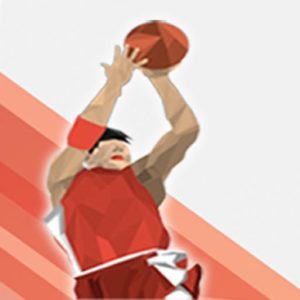 The one basketball season ends and another basketball year begins. If you are only playing and working on your game during the “official school season” than you are missing out. Below are the 4 sections / timelines that make up the “4 part basketball year” plus the off-season. Let’s start with the day after your school season ends…
The one basketball season ends and another basketball year begins. If you are only playing and working on your game during the “official school season” than you are missing out. Below are the 4 sections / timelines that make up the “4 part basketball year” plus the off-season. Let’s start with the day after your school season ends… The player progression described below** is based on my coaching philosophy and the style of play that I like to use for my teams.
The player progression described below** is based on my coaching philosophy and the style of play that I like to use for my teams.